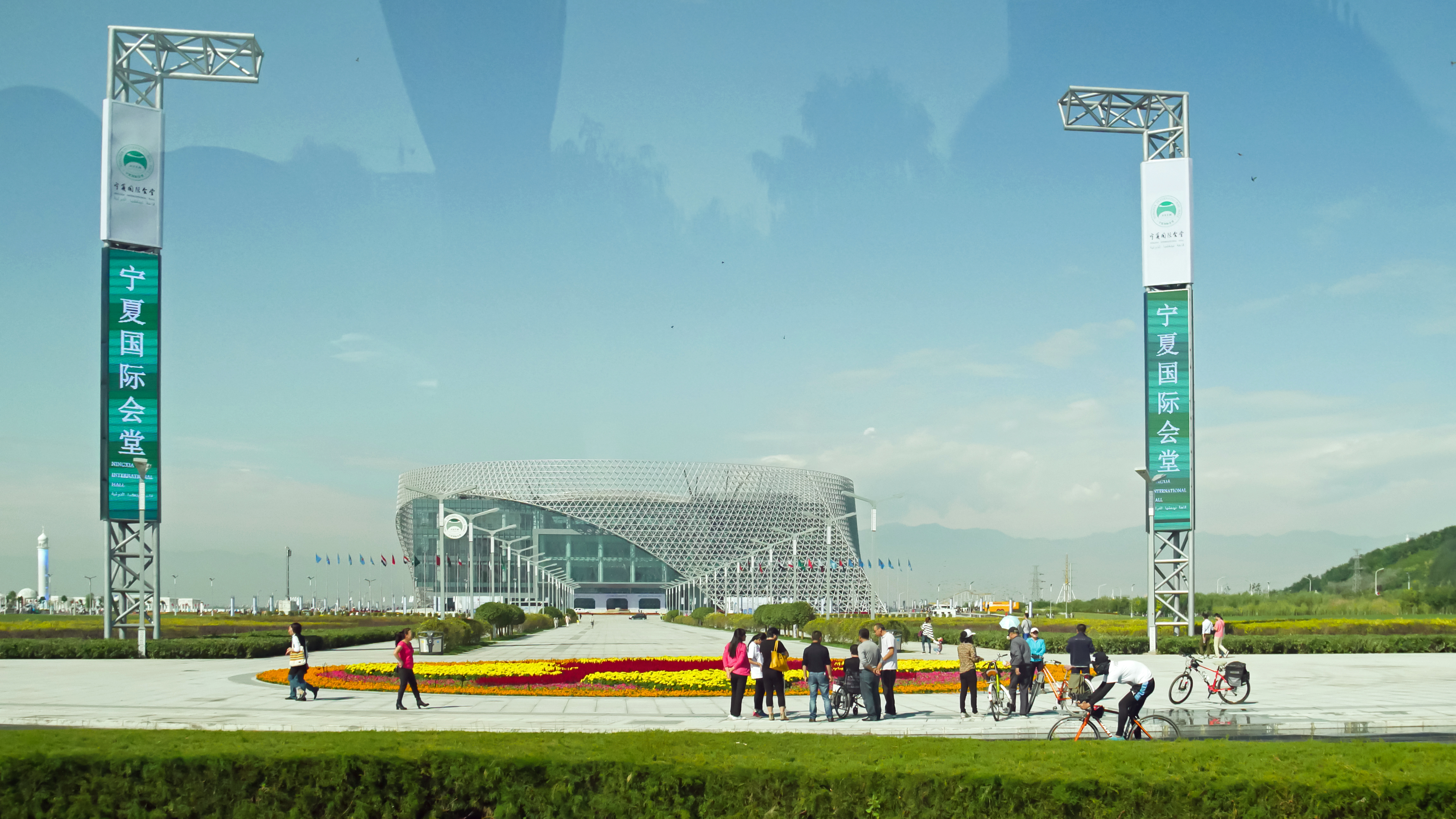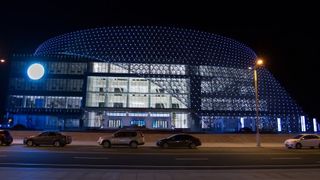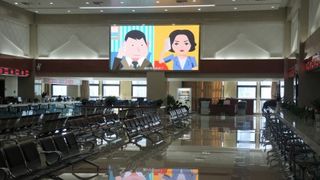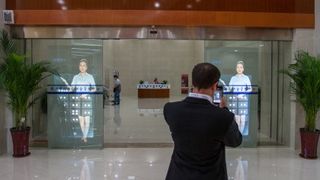Your city is stupid
Smart cities are great in theory, tricky in practice

In San Diego, California, 70% of the time a traffic light goes out city officials only know because somebody phones in to report it. Believe or not, that statistic isn't unusual. And yet, in the city of Groningen, Netherlands, some traffic lights have sensors that can detect when it is raining or snowing, and will grant more frequent passage to cyclists when they do.
Cities are a sieve for data but most of the information is flowing through the holes. Many bus systems will tell you when the next bus is coming, but how many tell you if there is a spare seat or space for your bike?
"Smart city" is one of the latest big buzzwords, but it's a phrase that can evoke such a jumble of ideas that it's not easy to find one single definition. Perhaps the best interpretation is this: a smart city is one that has been consciously designed, with the aid of technology, to increase efficiency.
Whether it's water control, energy conservation, waste management or something as exciting as garbage disposal, there are opportunities to turn these things into data-driven systems. Sure, it's easy for urban planners to roll out a few flashy ideas (or more cynically, for third-party technology companies to push these ideas for their own gain), but real smart cities solve problems.

The aqueducts built in the Roman empire, which continue to stand 2,300 years later, were themselves an example of smart city technology of the time. Designed with ingenuity and huge ambition, these constructs, which delivered water from outside sources into the city, brought about greater efficiency and agricultural benefits on a grand scale.
Jump to 2015 Saipan, one of the Northern Mariana Islands in the Pacific, and Qualcomm is building a modern day equivalent, using connectivity to deliver more water to citizens. "Fifty percent of the water is lost between its source and tap, and one of the biggest opportunities is to understand where in the pipeline that loss is happening," says Qualcomm Vice President of Global Market Development, Kiva Allgood.
"You can use sensors and mobile technology to find out where the leaks are happening." Before the new system, the average person in Saipan could turn their water on for two hours a day. Now they can have it on for four hours, and Qualcomm is looking to bring the technology to other places.
Get the best Black Friday deals direct to your inbox, plus news, reviews, and more.
Sign up to be the first to know about unmissable Black Friday deals on top tech, plus get all your favorite TechRadar content.
How do you define city intelligence?
Making a city "smart" isn't a matter of flicking a switch or whipping out a secret blueprint. Cities will all evolve over time, and they'll evolve differently; no two cities will have the exact same needs.
But the benefits will often go both ways. Take London's underground train system: before moving to its Oyster card system, Transport for London accepted cash payments, which presented a burden of cost. That cost was reduced after the switch, while transport providers started getting information from Oyster cards about the way people were flowing through the system - allowing them to improve it.
Now, NFC contactless payments and Wi-Fi on the London Underground present the potential to drive another layer of efficiency by better understanding the way people use the system. The Wi-Fi in particular could be used to better understand how people move within the stations themselves, which could help improve station design and safety. This is all helping make London smarter, but the city's population is predicted to grow by around 1.2 million people in next 15 to 20 years, and much more has to be done.
All around the world, urban populations are surging. Yinchuan, China, recently hosted a summit for smart city experts who gathered to share their ideas for smart cities of the future. It was also partly to celebrate the launch of Yinchuan's Smart City Innovation Center, the result of a collaboration between ZTE, TM Forum and the city of Yinchuan.

The center is a one-stop shop for citizens, leveraging shared data to deliver a range of services. By the time they've left, a visitor could have accessed a large range of services including healthcare, banking, utility management and even setting up a business.
It might not sound all too "smart" when compared to intelligent traffic lights, but it represents a bigger drive towards a more data-driven, efficient city. In fact, the entire summit demonstrated that city planners all around the world are thinking more carefully about ways to make their cities smarter and account for surging urbanisation.

Messing with the infrastructure
When Eric Garcetti was elected mayor of Los Angeles, California, his third executive directive was to make city data public. Making this raw data available hasn't just meant local government has became more accountable, it's also allowed companies to take the information and use it for the benefit of the citizens, promoting a culture of data sharing between the public and private sectors.
Perhaps one of the best examples of LA's data sharing initiative is the city's partnership with Waze. The traffic sharing app delivers up-to-date information on everything from hit-and-runs to road hazards. The data exchange is good for both the users, who can better prepare their route, and the city, which receives real-time traffic information as well as user-submitted reports.
It's clear that transport is a major area of opportunity to make cities smarter in terms of efficiency and human cost. In fact, "Vision Zero" is a proposal that one day traffic systems will incur no deaths at all, and making cities smarter will be key to getting there.
"You suddenly have this set of digital technologies to let us understand where accidents occur, let people know how to route around them," Peter Marx, Chief Technology Officer of the City of Los Angeles, tells us. "New York City very famously showed that older men turning left were the greatest cause of accidents. You can then start to work on the physical infrastructure. We started telling app developers [about the statistic] so they could tell people to use more caution."
In many cities, London included, the city layout makes it difficult to increase the size of the roads. "Imagine widening any street in London," says Marx. "There would be some pushback. But there's a digital overlay on the physical space that makes the entire city much more manageable. We have plenty of space on the streets, but we don't have the ability to effectively manage the vehicle traffic."
Take Bristol, the UK's sixth most congested city, according to TomTom data. The city council there recently announced that a 12,00-person arena was going to be built without a car park. "Which is a screw up really, but it's a deliberate screw up on [the mayor's] part," says Paul Wilson, Managing Director of Bristol is Open. "He's given us the task to find ways of smart parking, so you use the parking that exists already but more efficiently."
Solving city parking is a challenge and a half, but there are some interesting ideas already being thrown up. This year University of Massachusetts student Amir Ehsani Zonouz won a design contest for proposing the use of small quad-copters to help people find free parking spaces, determining the shortest route to the spot and guiding the driver to the destination.
Hugh Langley is the ex-News Editor of TechRadar. He had written for many magazines and websites including Business Insider, The Telegraph, IGN, Gizmodo, Entrepreneur Magazine, WIRED (UK), TrustedReviews, Business Insider Australia, Business Insider India, Business Insider Singapore, Wareable, The Ambient and more.
Hugh is now a correspondent at Business Insider covering Google and Alphabet, and has the unfortunate distinction of accidentally linking the TechRadar homepage to a rival publication.
Most Popular


